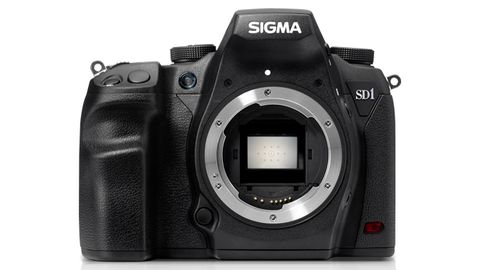TechRadar Verdict
Pros
- +
Excellent IQ at low ISOs
- +
Images contain bags of detail
- +
Robust build
Cons
- -
Frustratingly slow write times
- -
Noise at high ISO
- -
No live view or video
- -
Sigma raw software slow
Why you can trust TechRadar
Would you pay £6,200 in the UK, or $9,700 in the US, for an APS-C DSLR that didn't offer live view or video shooting, wasn't compatible with third-party lenses and captured raw files that weren't widely supported? That was the question posed by the 46 megapixel Sigma SD1 in June 2011.
We're guessing that the positive answers didn't exactly flood in, because 12 months later Sigma released a rebranded version: the SD1 Merrill. It's a rebadged version of the same camera, offering identical performance but at a new, more sensible price. Cheaper manufacturing bills mean Sigma can offer the SD1 Merrill at the much sweeter cost of £1,840/$1,900.
Fortunately, Sigma is also offering a points reward system to photographers who forked out the price of a small car for the old model.
The Sigma SD1 Merrill is named in honour of the late Richard 'Dick' Merrill (1949-2008), the engineer who developed the Foveon X3 image sensor that's at the heart of Sigma cameras.

Rather than being a 'true' 46MP sensor, it's made up of three layers that each contain around 15.4 million pixels that are embedded in silicon. This design takes advantage of the fact that red, green, and blue light penetrates silicon to different depths.
This means that the SD1's sensor captures full colour at every point in the image, rather than just red green or blue as with a standard Bayer pattern sensor. It's this sensor, and its implications for picture quality, that's the big draw of the Sigma SD1.
It needs to be, because otherwise the feature set is a little on the light side. There are no intelligent auto or scene mode frills here - it's Program, Aperture Priority, Shutter Priority and Manual mode all the way.
Four options are provided for metering: Evaluative, Centre-Weighted, Centre Area (which only takes the region covered by the nine central AF points into account) and Spot.
Sigma SD1 Merrill at a glance
Sensor:
46 million effective pixel Foveon X3 (23.5mmx15.7mm) CMOS
ISO range:
ISO 100-6400
LCD screen:
3-inch, 460,000-dot TFT
Dimensions:
145.5mm x 113.5mm x 80mm, 700g (body only)
The Sigma SD1 Merrill features an 11-point AF system. Each of these AF points can be selected manually using one of the control dials while looking through the viewfinder, or by using the four-way controller when viewing the AF point display on the rear LCD.
Focusing can be set to Single AF, Continuous AF (incorporating Predicative AF) and Manual. So far, so familiar.
Drive mode features a typical array of settings, too. Continuous Shooting mode is disappointing, rated at just five frames per second for a maximum of seven frames. This figure applies across the board for high resolution files, whether you're shooting JPEG, raw or raw+JPEG files.

In addition to single-frame and continuous drive settings, two self-timer options and Auto Bracketing, the Sigma SD1 Merrill's dedicated mirror lock-up function is worth noting. Select this and the camera flips the mirror out of the way when the shutter release button is fully depressed.
A picture can then be taken by simply half-pressing the shutter release again, meaning you're less likely to jerk the camera and screw up the sharpness you're trying to preserve with mirror lock-up in the first place - a nice touch.
Alternatively, the camera can automatically take a picture either two or 10 seconds after the mirror's been moved.

